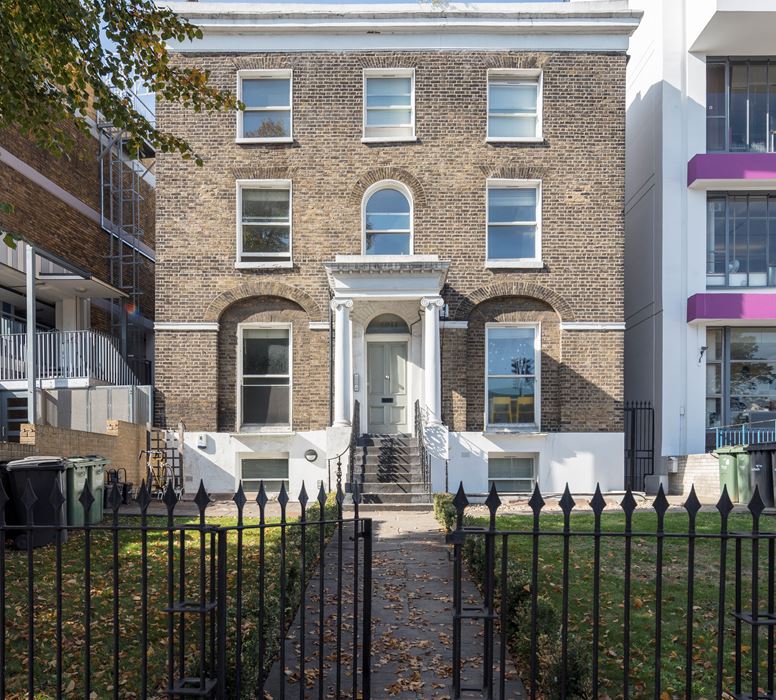
Description
Enviably located just a short walk from Brixton town centre with its abundance of eclectic markets and shops, trendy bars and restaurants and outstanding transport links, stands 340 Brixton Road, an elegant four-storey (three storeys and a basement) early nineteenth century detached villa built by slate merchant Evan Roberts in c.1826.
The grade II listed building, situated within the Brixton Road and Angell Town Conservation area, has been sensitively converted into seven stylish, high specification apartments. The conversion was completed in 2011.
It is thought the attractive period building was originally built as a single dwelling house, then subdivided to provide two maisonettes in 1929. The property was subsequently converted into office space in the mid to late 20th century and was home to the District Register Office in the 1960’s. Its most recent use, before its conversion, was as a healthcare facility.
Brixton Road (the A23) dates back to Roman times; its path follows the original Roman Road which linked the City of London with Brighton (the London to Brighton Way). However, despite the ancient Roman transport links, the Brixton area remained largely undeveloped until the 19th century. Once Vauxhall Bridge was completed in 1816, intensive building along the main trunk roads in the surrounding area began. It is thought 340 Brixton Road and other villas in the area were constructed during this early wave of development.
Location Brixton
Property Type C3
340 Brixton Road is located on the fringe of vibrant Brixton town centre so is in the ideal location to access all the local amenities and transport links the town has to offer including mainline and underground trains and buses. The famous live music venue O2 Academy Brixton is just a four-minute walk away, while the Ritzy Cinema and Brixton Village Market is a ten-minute walk away.
Just around the corner from no. 340 Brixton Road is Max Roach Park. Named after jazz legend Max Roach, the park features a fantastic children’s playground with numerous climbing frames, slides and swings and a nature trail that leads to Rush Common. The park also boasts a thought-provoking sculpture by Raymond Watson, entitled ‘First Child.’ The contemporary art piece was created as a memorial to the 116 children who died in the Soweto uprising of 16 June 1976.

[The ‘First Child’ by Raymond Watson photo credit CC BY-SA 2.0-Paul Farmer]
The area further benefits from a community sports centre and several gyms within walking distance as well as a selection of highly regarded state and private schools.
